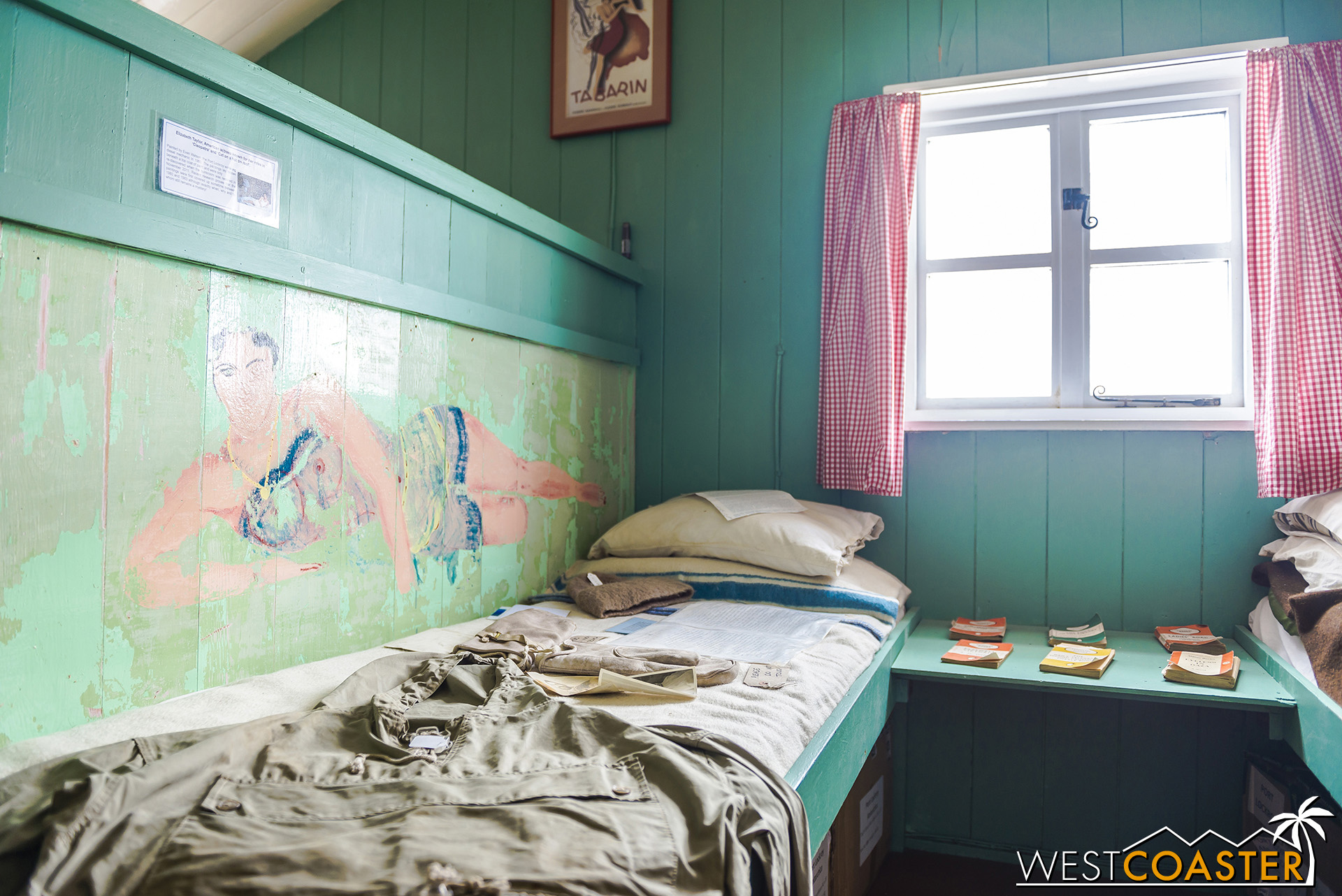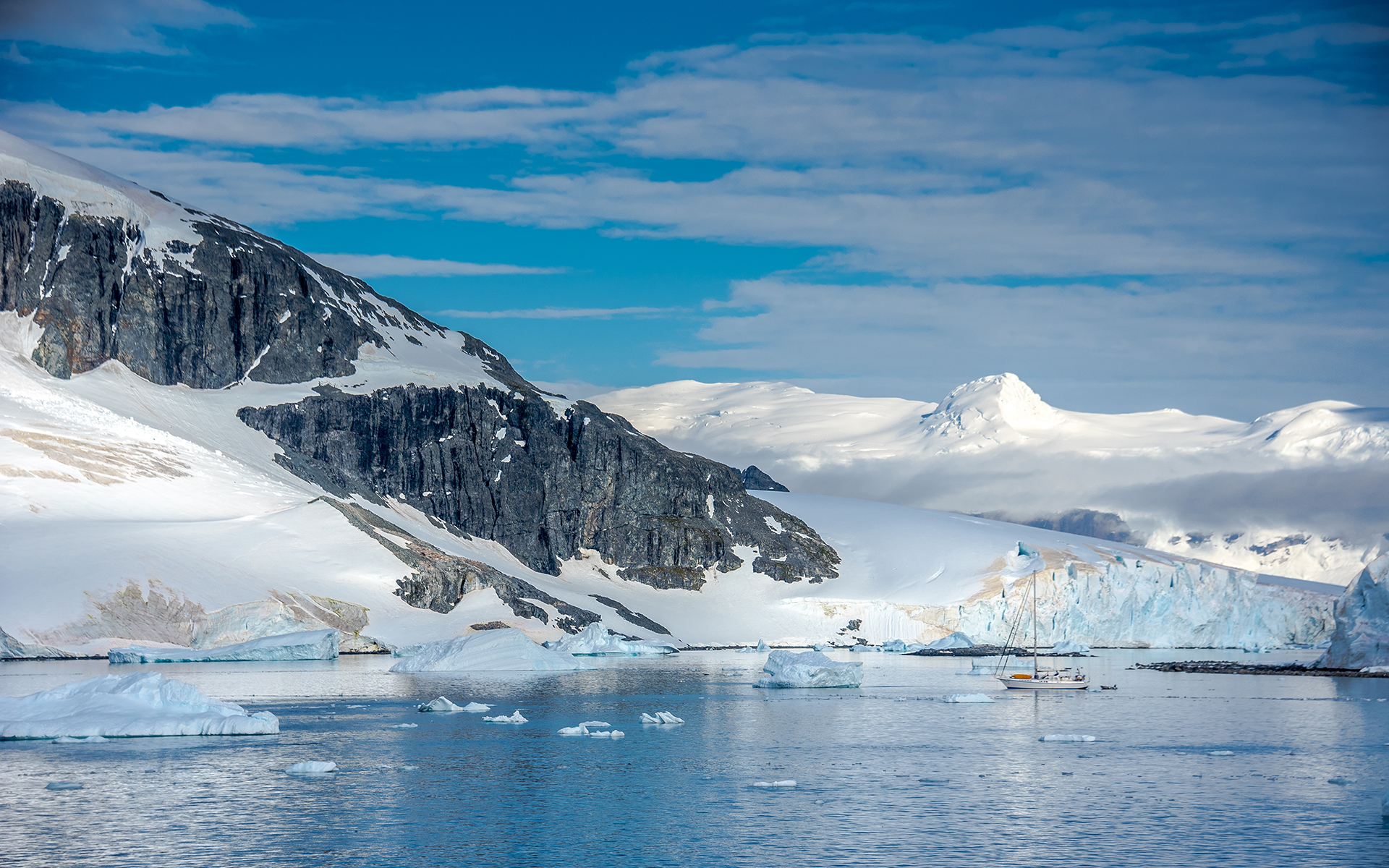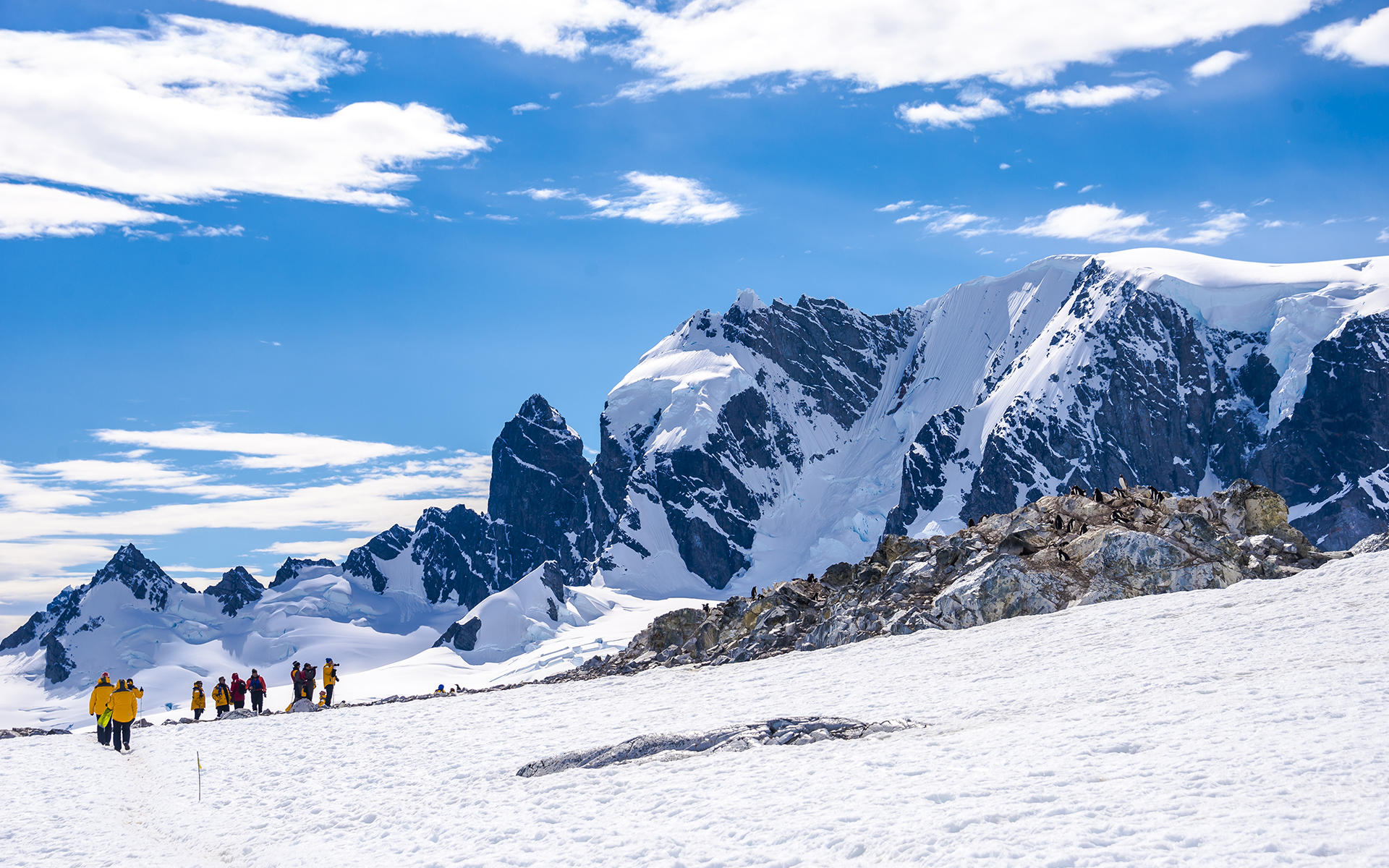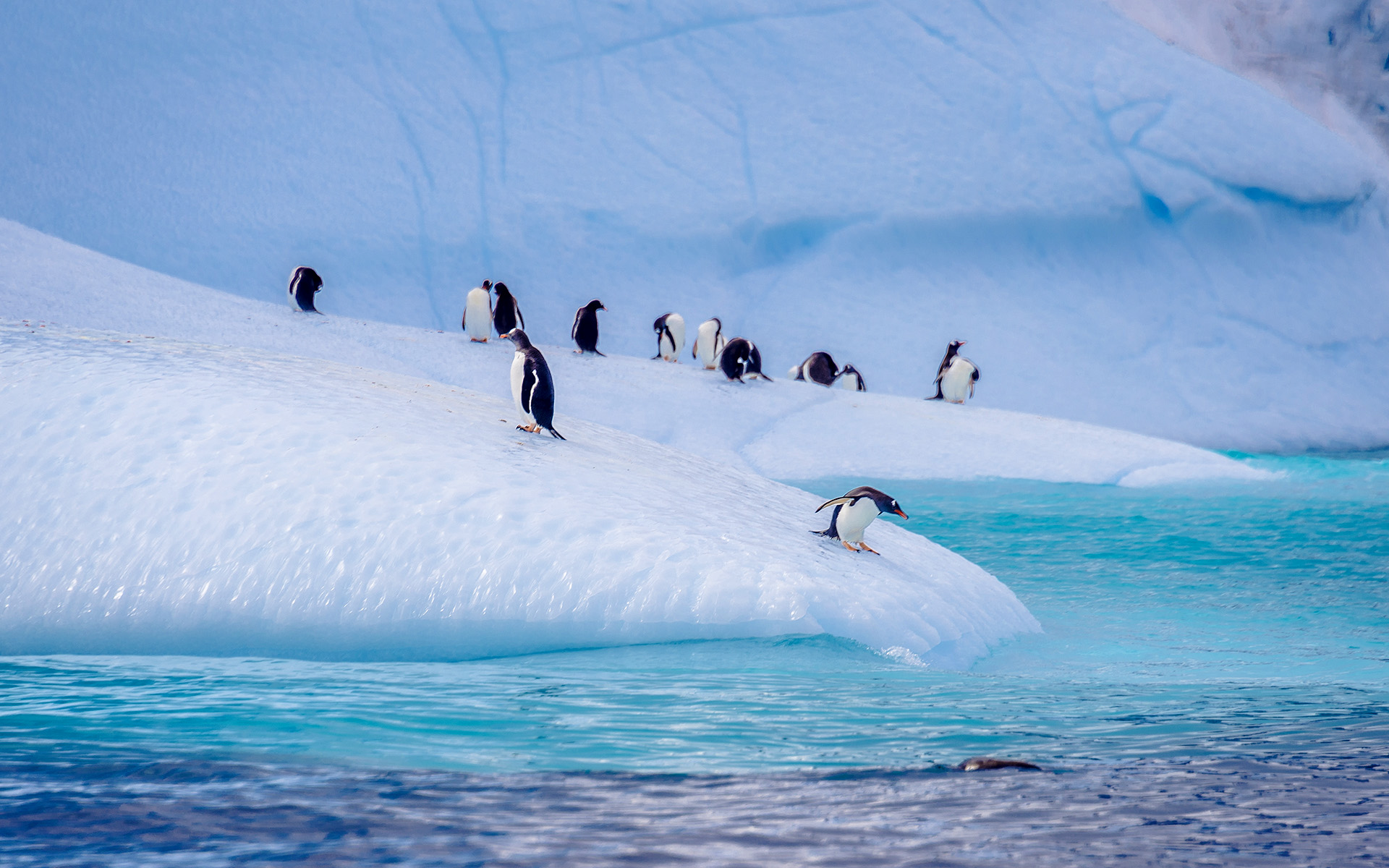Albert's Antarctica Adventure: Port Lockroy

Goudier Island & Jougla Point, Antarctica
Our first post of 2019 is almost a throwback, because it was almost a year ago that I started a most incredible journey that… still hasn’t really ended, because I’ve dragged these Antarctica trip reports far longer than originally intended. But really, at this time last year, I was in South America, a few days away from departing Ushuaia for a voyage to the 7th Continent, to see glaciers and penguins and snow everywhere. With that anniversary looming and most of our holiday-related posts in the rearview mirror, it’s time to finish up these reports!
When we last left off, we were departing Cuverville Island and heading back down the Errera Channel, basking in the sunshine of a gloriously beautiful morning in the Antarctic wilderness. The afternoon destination of our third full day in Antarctica was Port Lockroy, an old British research station from the 1960s renovated into a museum thirty years later and operated today as a scientific base and museum during the summer months at the bottom of the world. It’s also home to the world’s most southerly post office, making it a fun stop for people to actually mail postcards that can be postmarked from the 7th Continent!
The tiny base at Port Lockroy is dwarfed by the resplendent landscape behind it.
This excursion would be a little bit different from our previous stops. Rather than having half of our ship go to shore while the other half cruised on the water in our Zodiac rafts, both parties would be making landings. One of them would stop at the actual museum and part-time research base on Goudier Island, taking about 45 minutes to tour the facilities and explore the small island on which it was situated. Meanwhile, the other half would slip over to a very nearby island that was home to a plethora of penguins, some seals, and some weathered whale bones!
Landing at Base A.
A supply shack beyond attracting plenty of local wildlife.
The British presence at Port Lockroy persists through today.
The group I was a part of ended up going to Goudier Island first. Though the rocky beach landing was shallow and steep, we had no issues making our way onto land, where we were promptly greeted by scuttling Gentoo penguins plopping along everywhere. Plenty of them were gathered adjacent to the base building itself, nesting with their young penguin chicks. The site was amazing for the proximity of the penguins and adorable for the irresistable charm of the baby Gentoos, and we were transfixed at the fledgling family broods as we climbed the steps up past.
Penguins and penguin chicks nest just off the path.
Our allotted time was not that substantial, however, so very quickly, people made their way around the base and into the base station, which functions more as a museum today than as a scientific establishment (though the team members who reside there during the summer do assist with some research functions by counting, inventorying, and tracking the penguin colonies that nest on the island each year).
This historic site is also home to the most southerly post office in the world.
Port Lockroy was discovered over a century ago, in 1904, and named after French politician Edouard Lockroy. Though it was used for whaling over the next few decades, it was the British who established Base A during World War II. This station provided greater claim for the Brits during the mid-century race by several nations to establish holds over the continent, until the Antarctic Treaty was signed in 1961 to establish diplomatic peace and maintain scientific and operational cooperation on the continent for exclusively peaceful purposes.
The station was abandoned in 1962, however, and quickly fell into disrepair and ruin due to the harsh elements. The neglect continued for over thirty years, until Britain was ordered under the provisions of the Antarctic Treaty System to either go back to Goudier Island and completely remove all man-made structures, returning the island to its previous untouched state, or take up regular, permanent residence and refurbish the buildings and facilities. In 1996, Port Lockroy’s base reopened as a museum showcasing how the researchers from two generations prior lived and worked at the base. With a functioning post office offering Antarctica postmarks and souvenir passport stamps as well as a charming gift shop, Port Lockroy has become one of the most popular tourist sites in all of Antarctica, serving as a stop in practically every Antarctic cruise.
The interiors have been restored to how they looked back in the base’s scientific research days during the mid-century.
Food items and mugs on a shelf.
Radio and scientific equipment for observations and communication.
Walking through the base today is very much like stepping back in time. From generations-old foodstuffs to antiquated radio equipment to even the paint palette of the interiors, there are plenty of wonderful details that really immerse guests into the expedition life of the old British researchers. Unlike normal museums that feature objects in their own isolated displays, the entire building and the architecture is the actual museum. It is enveloping.
Imagine having a penguin view outside the window everyday!
More equipment set up in an adjacent office.
Of course, there are also plenty of educational signage detailing the purpose of each room and describing what life was like for the people who resided there. One of my favorite stories involved a salacious discovery during the restoration process undertaken by the returning Brits during the 1990s. While scraping wall and cabinetry surfaces to determine and bring back the original finishes, it was found that one of the researchers back in the day was a rather artistic fellow, and—perhaps to provide a tender and warming touch to the ambiance—painted scantily clad pin-up style women onto some of the cabinets and wall surfaces in the sleeping quarters! Perhaps the sight of the beautiful, semi-nude women helped the all-male original expedition teams cope with their isolation from the rest of the world and its more intimate comforts. In any case, what was most humorous was the fact that these paintings had later been covered up, as though the last scientists leaving the base in 1962 thought, “Hey, we should probably hide all traces of such scandalous images away so that no one in the future ever sees this!”
One of several negligee ladies painted in the Base A sleeping quarters.
Yes, this is a functional post box. Port Lockroy processes 70,000 pieces of mail each year from Antarctic tourists.
Exploring each space was fascinating and offered its own tidbit of information and history. It didn’t take long to exhaust the 45 minutes, and I spent the last bit scrambling to mail off some postcards that I had prepared and also check out the gift shop to find unique souvenirs that definitely were remote to acquire! Though many of the items were pricey even by souvenir gift shop standards, I was happy to pay, since proceeds go to a fund that pays for maintenance of various monuments and historic sites in Antarctica.
Making my way back to the landing, I found myself in the last Zodiac ferrying guests from Goudier Island to its nearby, penguin-filled neighbor. Phew!
Whereas Base A was an exhibit in human occupation, the second half of our excursion was back to a communion in nature. The rocky hills and beaches of this dot of land was home to over 2,000 penguins and their newly born chicks, and it offered more close-up opportunities with those adorable, waddling birds.
More Gentoo penguins on the neighboring island.
As we made our way to the far end of the island walking path, we passed by a set of monstrously large bones—the spine of a long-gone blue whale. The largest animal on earth, the blue whale can grow up to nearly 100 feet long. This mammoth proportion was driven home by the fact that just its spinal vertebrae stretched along the rocky beach stood nearly as high as an adult person! Though we had seen whale bones at some of the other sites before, nothing compared to this magnificent sight!
The remains of a blue whale from whaling days long past.
The texture of the bones is kind of hauntingly beautiful.
Nearby, resting on an icy slab, we also spotted a lone seal, blissfully snoozing in the afternoon sun. Most likely full following a hearty lunchtime feeding, the Weddell seal hardly stirred through its slumber. Fortunately, we were too far away to really disturb it, and we instead took pictures and savored the encounter.
A Weddell seal naps nearby.
Of course, the prime attraction here was not whales or seals, but penguins. Literally thousands of them! If one thinks that three days of seeing penguins might create some amount of penguin fatigue, well, it did not for me. It was delightful to see this massive flock of Gentoos nesting and feeding (the odor, however, was less delightful; one did get used to it over time, though).
The most memorable aspect of this particular colony, however, was its high rate of penguin chicks. Port Lockroy is a popular spot for penguins to raise their young, and this island certain showed it! There were penguin chicks everywhere, some just a week or two old, while others several months along but still fluffy and enchantingly cute. It was like being in a nature documentary. But witnessing all of this in person was another level entirely!
Penguins, penguins, scattered about everywhere!
And lovable penguin chicks too!!
They’re absolutely adorable.
Just look at that irresistible, fuzzy face!
My shutter was a constant click as I captured unforgettable moment after moment. But it was the review of one particular photo that had me laughing at what may very well be the greatest picture I have ever taken.
I’ve mentioned before that penguins, though captivating, are not 100% appealing. Although they are beautiful, delightful, and awkwardly charming creatures in their movements and their conversational chatter, they also stink an odorously plentiful lot. Penguins are usually smelled before they are heard and heard before they are seen, and when there are thousands of these birds all around, it can be quite a deliverance to the nose! The primary reason for this is because they quite literally poop all over the place… on the rocks, around their nests, and even sometimes on each other. Each goop of penguin excrement is a pungent mixture of foul manure mixed with a salty, fishy tinge, and it is quite an olfactory assault to first-time encounterers.
In this case, I was focusing on one particular penguin cluttering when I registered a subtle projectile just as I hit the shutter. I quickly pulled up the photo I had just taken and began pressing the “zoom in” button to see if I had captured what I thought I had captured. And, yup, as I “pixel kept” closer and closer, it became clear that I had aced a photo of a young penguin toddler, pending over and letting one tremendous squirt of excrement rip—bulging anal orifice and all—all with perfect sharpness and laser-precise focus! Under any other circumstance, this would be absolutely disgusting. But these were penguins. Even while taking a massive dump in my direction, these guys somehow maintained a peculiar charm. So I could do nothing more than laugh at the chance timing and move on.
What a lovely photo of a group of penguins, but wait a minute…
Is that a stick lodged up an unfortunate penguin or a weird illusion of a compressed perspective?
Nope. It’s a penguin chick unabashedly bending over and letting fly a streaming glop of poo!
Soon, though, it was time to depart. Begrudgingly—because it was an immensely beautiful afternoon, I made my way back to the landing, joining my friends, waiting and taking in the last of the site before we had to return back to our ship, the Ocean Diamond.
Time to go back to the ship. This penguin might want to join.
I had some other nice photographic moments too as we returned to our ship. Off in the distance, enveloped by the massive glaciers and ice floes around it, a solitary sailboat was moored in the water, also taking in the sights. We had seen another one a couple of mornings prior, during our visit to Danco Island, but this one seemed more rustic. It surely must have braved a harrowing experience across the Drake Passage, whose ocean sets could have tossed it much more dramatically than it did our much larger cruise vessel.
A little bit beyond that, on a snowy incline, we also spotted a few isolated trekkers hiking up the hill. Perhaps they had come from the sailboat, or perhaps they were a separate party. Either way, seeing these tiny figures dwarfed by the landscape brought about a suddenly humbling emotion. Here we were, in the absolute splendor of nature, and Antarctica was reminding us how we were but a small speck on a most magnificent planet!
A sailboat in the distance, in front of a heavy blanket of ice.
Four intrepid explorers, rendered ants across the glorious landscape.
The Ocean Diamond stayed anchored in the harbor longer than I would have expected, given the time that we returned. As the afternoon turned into evening, though, I was glad for the respite, because the setting sunlight and creeping clouds combined to create another spectacular sunset—the second of our trip! Both the colors of the sun to the west and the golden glow of sunlight on the icy caps and rocky crags of the mountains opposite us to the east brought about yet another memorable highlight. It was a dramatic closing to what ended up being my favorite excursion of the entire trip!
Also glorious, the sunset on this evening.
The magnificence of light and shadow projected across an Antarctic mountain face, rendering an indelible memory forever.
Port Lockroy combined a fascinating look at a bit of history and human settlement with Antarctica’s regular wildlife treasures—whales (in one form or another), seals, and plenty of penguins. Add to that a heavenly day, perfect weather, and some of the best photo ops of the trip, and this was an experience that I will never forget.
And yet, bittersweet among the enjoyment of these incredible moments was the creeping knowledge that we would only have one more day left in Antarctica. Two more excursions—one in the morning and the latter in the afternoon—before it would be time to turn around back north, head across the Drake Passage, and come back to Ushuaia.
It only made me more cognizant of treasuring the remaining time here.
Architect. Photographer. Disney nerd. Haunt enthusiast. Travel bugged. Concert fiend. Asian.



















































































